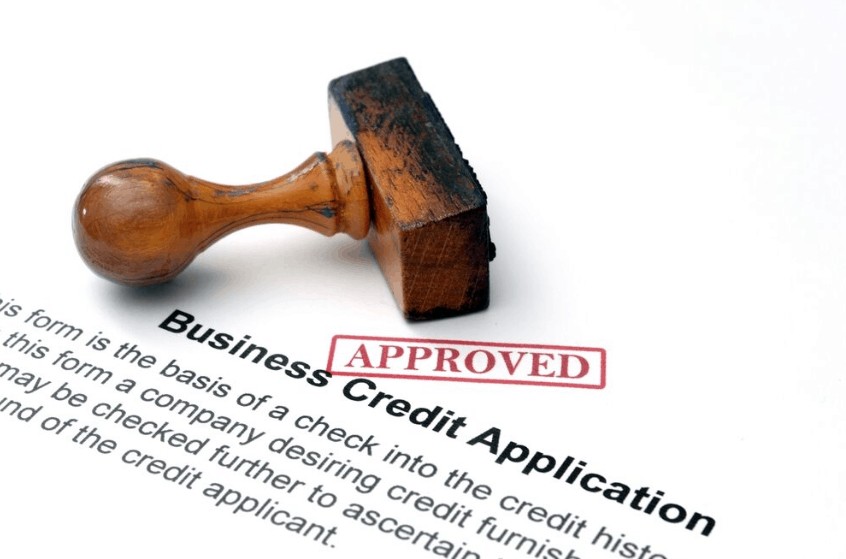Establishing A Line of Business Credit
A business line of credit is a possible option for a small or start-up business to get the capital needed to manage cash flow, fund day-to-day operations and take advantage of new opportunities.
Our picks for the best business lines of credit come with limits ranging from $10,000 to $3 million. The challenge is to find one that meets your needs. Here are six of the best, whether you’re just starting out or are established and looking to grow, and a quick look at how business lines of credit work.How’s your credit? Check My Equifax® and TransUnion® Scores Now
Best for rate discount
Bank of America offers secured and unsecured business credit lines. Both types may come with an interest rate discount of 0.25%, 0.50% or 0.75%, depending on your three-month average combined balances in Bank of America business deposit accounts and/or Merrill Edge® or Merrill Lynch® business investment accounts.The unsecured lines range from $10,000 to $100,000. And the secured lines start at $25,000, though you may not be required to secure the line of credit if it’s $100,000 or less (more than $100,000 and you’re generally required to secure the line of credit with collateral). Depending on your needs — like your desired credit-line amount and interest rate preferences — one type may be more appealing to you. Both the secured and unsecured business lines of credit are subject to annual renewal.In order to qualify, your business must have a two-year track record under existing ownership, plus annual sales of at least $100,000 for an unsecured line or $250,000 for a secured line.
Best for a longer repayment term
PNC Bank offers a secured business equity line of credit that gives you seven years of revolving credit during which you’re only required to make payments on the interest you’re charged. After that, you’ll have 10 years to repay the funds that you borrowed. No annual renewal is required to keep your credit line open for the full seven-year period.
The line can be secured by a personal residence or a commercial property that’s owned and occupied by the business. The limit ranges between $10,000 and nearly $1 million.
Best for a higher limit
One of PNC Bank’s other secured credit lines has a limit of $100,001 to $3 million. That’s one of the highest maximums of the credit lines we reviewed, although Bank of America’s secured credit line has no specified maximum.
The line can be secured by non–real estate business assets, such as equipment, as long as the property or items meet a certain value. There will be an annual review to ensure your business still meets the requirements to renew the line of credit for another year.
During the revolving period, you can make automatic payments on interest charges and you can make payments toward the principal at any time.
Best for fixed-rate option
You may see credit lines with a variable interest rate, which means your interest rate can fluctuate based on an index. US Bank’s Cash Flow Manager Line of Credit comes with an option to lock in a fixed rate. The option is available if you have a minimum credit line of $2,000 with a loan term of 1–5 years. Plus each fixed-rate option has a $50 fee.
A few things to note: The bank may limit the number of fixed-rate options you can have at one time. And if your credit line has a Small Business Administration guarantee, you won’t be able to use the option to lock in a fixed rate.
And the credit limit tops out at $250,000.
Best for the rewards program
Wells Fargo offers two unsecured lines of credit, Wells Fargo BusinessLine® and Wells Fargo Small Business Advantage®. Both of these get you access to the Wells Fargo Business Line Rewards Program.
You’ll earn one point for every dollar you spend on net purchases you make with an access card, which lets you make purchases directly from the credit line. You can also earn 1,000 bonus points every billing period if you spend $1,000 or more in net purchases.
Best for start-ups
Sometimes, credit lines require you to have a track record of several years in business with the current owner to qualify. The unsecured Wells Fargo Small Business Advantage® doesn’t, making it a great option for start-ups, though it does have a five-year term, after which it may be reviewed.
The unsecured line ranges from $5,000 to $50,000. And there may be an annual fee, depending on your credit line amount.
- Credit lines from $5,000 to $9,999: no annual fee
- Credit lines from $10,000 to $25,000: $95 annual fee
- Credit lines from $25,001 to $50,000: $175 annual fee
How does a business line of credit work?
A business line of credit allows a business to borrow money, repay it and borrow again, up to the credit limit — similar to a credit card.
Business lines of credit aren’t all alike. Some are offered by banks. Others are offered by nonbank finance companies. Some are secured, which means they may require collateral. Collateral may take the form of business assets, commercial property, personal property (generally your home) or certificates of deposit. Other lines are unsecured, which means no collateral is required.
A line of credit comes with a credit limit, which is the maximum amount that you can borrow from it at any one time. Unlike a credit card, the line can incur interest as soon as you use any portion of the funds. The interest rate you’ll be charged for the amount you borrow is usually lower for a credit line than a credit card.
Before you apply for a business line of credit, research the terms, compare offers and read the fine print. Consider factors such as …
- Credit limit
- Interest rate
- Repayment period
- Annual review and renewal
- Requirements to be approved
- Any special perks or rewards
What are the requirements to get a business line of credit?
To get a business line of credit, you must apply and be approved by the lender. Whether your company is approved depends on whether it’s deemed creditworthy, and if you have business credit scores, those may be considered. But the requirements will vary by lender.
Credit Karma Guide to Business Credit Scores
If you haven’t had a business line of credit before, a lender may look at individual credit history.
Why separate credit histories?
By having a business credit history separate from your personal one, you can minimize the effect negative events one might have on the other. For example, if you have some financial missteps that impact your personal credit history and score, they shouldn’t impact your small business credit if you have established a clear separation and vice versa.
Why separate businesses and owners?
Unless you’re operating your small business as a sole proprietorship or general partnership, you need to demonstrate that the business is separate from the owners. One of the key benefits that corporations and limited liability companies (LLCs) provide the owners is the protection of their personal assets. Keep this protection in place by consistently showing a clear separation between the owners and the business.
Eight steps to establishing your business credit
- Incorporate your business. Even though you may be incorporated when you’re reading this, it deserves a mention. With sole proprietorships and general partnerships, the business is legally the same as the owner; therefore, there can be no separation of business credit history from personal. Incorporating a business or forming an LLC creates a business that is legally separate from the owner(s).
- Obtain a federal tax identification number (EIN). The EIN is basically a social security number for a business. It is required on federal tax filings, and is also required to open a business bank account in the name of the corporation or LLC. In order to comply with IRS requirements, many larger businesses also require an EIN from their vendors in order to pay them for services provided.
- Open a business bank account. Open a business checking account in the legal business name. Once open, be sure to pay the financial transactions of the business from that account. If you use a business credit card (see below) for many financial transactions, be sure to pay the credit card bill from your business checking account.
- Establish a business phone number. Whether you use a landline, cell phone or you use VoIP, have a separate number for your business and in your business’ legal name. List that number in the directory so it can be found.
- Open a business credit file. Open a business credit file with all three business reporting agencies: Experian, Equifax and TransUnion.
- Obtain a business credit card(s). Obtain at least one business credit card that is not linked to you or any other owners personally. Pick a business credit card from a company that reports to the credit reporting agencies.
- Establish a line of credit with vendors or suppliers. Work with at least five vendors and/or suppliers to create credit for your company to use when purchasing with them. Ask them to report your payment history to the credit reporting agencies.
- Pay your bills on time. Perhaps it should go unsaid, but be sure to pay your bills on time. Like with your personal credit, late payments will negatively impact your business credit.
Benefits of having good business credit
Having good business credit can provide a number of benefits, including:
- Positioning your company for more favorable payment terms with new vendors and suppliers.
- Reducing the number of times you will need to prepay for products or services purchased.
- Allowing you to obtain better interest rates and credit terms from lenders and banks.
Once you have established and built good business credit, be sure to monitor and protect it, just as you do with your personal credit.
How to Get a Business Line of Credit: 4 Steps
Step 1: Check Your Business’s Qualifications
As you can see, there are a variety of reasons why you might decide to get a business line of credit.
With these in mind, let’s start breaking down the process. The first step is checking your business’s qualifications. By knowing where your business stands ahead of time (as in, before you start comparing options and completing applications), you’ll save time and effort throughout the process.
This being said, although there are a variety of business line of credit requirements you might have to meet depending on the lender you’re applying with, there are a few most common qualifications that you can use to evaluate your business’s prospects.
Let’s discuss further.
Personal Credit Score
To start, you’ll want to determine where your personal credit score stands. When applying for a business line of credit, or any financial product for that matter, your personal credit score will very likely be one of the first things a lender looks at.
This being said, some lenders will implement a credit score minimum—meaning you’ll have to have at least that credit score in order to qualify for their business line of credit product.
Overall, your personal credit score will indicate how trustworthy you are as a borrower. Therefore, the higher your personal credit, the more likely you are to qualify for a line of credit, and one with the best rates and terms.
Generally, it’s safe to say if you have a credit score of 600 to 630 (or higher) you’ll be in decent shape to qualify for most business lines of credit. If you’re applying for a bank or SBA line of credit, however, you’ll likely need to have excellent credit, as well as other top qualifications. Most online lenders will be more flexible—with some lenders, like Fundbox, even accommodating a credit score of 500, and others, like Kabbage, with no credit score minimum.
Annual Revenue
Next, you’ll want to take a look at your annual revenue. Like your credit score, most lenders will implement a minimum requirement for annual revenue that a business needs to meet in order to qualify for a line of credit.
A lender will use your annual revenue (as well as other business financials) to ensure that you have enough money coming in to pay back any funds you use from your credit line.
On the whole, just like with your credit score, the higher the amount of annual revenue you have, the better. Again, if you’re looking to get a bank or SBA business line of credit, you’ll generally need to meet a fairly high annual revenue requirement. Alternative lenders, on the other hand, will show greater flexibility, with many lenders setting their minimum annual revenue requirement at anywhere from $25,000 to $100,000 or higher.
Of course, regardless of the small business lender you’re applying with, a higher annual revenue will also give you access to a line of credit with the most desirable terms and lowest interest rates.
Time in Business
When you’re looking to get a business line of credit, you’ll also want to consider your time in business as you evaluate your qualifications.
Generally, a longer time in business means less risk for a lender—your business has been able to maintain ups and downs in operations thus far, and therefore, is more likely to be able to pay back a loan.
This being said, the ideal threshold to meet is two years in business. After two years in business, you’ll be more likely to qualify for the best financing products.
However, compared to traditional business term loans, it’s often easier to qualify for a business line of credit with only a year in business, sometimes even less. For example, online lenders, BlueVine and Fundbox have very flexible time-in-business requirements for their lines of credit: BlueVine requires six months in business and Fundbox only requires three months.
Collateral
Finally, you’ll want to evaluate what kind of collateral you can offer as you think about your business’s line of credit qualifications—especially if you’re a newer business or have bad credit.
In fact, most business lines of credit are secured business lines of credit—meaning they’re backed by some form of collateral. This being said, some lenders will require physical collateral to secure your credit line, such as real estate, equipment, or inventory. On the other hand, some lenders may require that you sign a personal guarantee stating that you’ll use your personal assets to repay the funds you’ve borrowed in the case your business can’t pay.
Additionally, some lenders may take out a lien on your business when you get a line of credit with them—meaning that the lender has a legal claim to recoup your business assets in the case that you can’t repay your debt.
Ultimately, although not all lenders will require collateral, it’s important to consider what collateral you have or are willing to offer. Generally, if you can offer some sort of collateral, you’re more likely to access a business line of credit with better rates or terms. Plus, if you’re a newer business or a business owner with bad credit, putting up collateral may make you more likely to qualify for a credit line.
Step 2: Compare Your Business Line of Credit Options
Once you’ve evaluated your business’s qualifications, you’re ready to start exploring your options.
In this vein, you’ll want to determine what type of revolving line of credit will be best for your business—considering secured vs. unsecured, short-term vs. long-term, and bank vs. online credit lines.
By using the qualifications you established in step one, you’ll be able to narrow down your options to find the right business lines of credit to apply for.
Let’s explain.
Short-Term vs. Long-Term Business Lines of Credit
One of the first things you’ll want to look out for when you compare business lines of credit is whether they’re short-term or long-term.
Generally, a short-term line of credit is a credit line with repayment terms of a year or less, whereas a long-term credit has repayment terms of longer than a year.
Overall, short-term lines of credit (most often offered by online, alternative lenders) will be easier to qualify for, have simpler applications, and will fund faster. However, they will likely also be more expensive, and you’ll need to pay back the funds faster.
If you’re a newer business or business owner with bad credit, you might focus your search on short-term lines of credit, as you’ll be more likely to qualify for these products. You might also turn to a short-term line of credit if you need funding fast. On the other hand, if you have higher qualifications and can accommodate slower funding, you’ll want to focus on longer-term lines of credit.
Longer-term lines of credit, like bank or SBA credit lines (and even some from online lenders), will not only have longer repayment terms, but they will also be more likely to have lower interest rates.
Secured vs. Unsecured Business Lines of Credit
Next, you can narrow down your business line of credit options by deciding whether you want a secured or unsecured line of credit.
As we mentioned above, it’s actually very difficult to find a truly unsecured business line of credit—even if a lender doesn’t require physical collateral, they’ll often require a personal guarantee or implement a blanket lien to secure your credit line.
This being said, if you’re looking to avoid putting up physical collateral, you’ll want to focus on lines of credit from alternative lenders. Lenders like Kabbage and OnDeck won’t require you to put up business assets for your line of credit, but they will likely ask for a personal guarantee or take out a lien on your business.
On the other hand, if you are willing to put up collateral (and have other top qualifications) you may turn to bank or SBA credit lines. These lines of credit will also have the best rates and terms.
With this in mind, it’s also important to consider that putting up collateral for your line of credit may not only make you more likely to qualify, (again, especially if you have bad credit or little time in business) but overall, it may also help you secure more desirable rates and terms.
Bank Lines of Credit vs. Online Lines of Credit
Finally, another important consideration to take as you compare business lines of credit is whether the credit line is issued by a bank or an online lender.
As we’ve mentioned, bank lines of credit (as well as SBA lines of credit) will offer the most desirable rates and terms, but they’ll also be the most difficult to qualify for. Additionally, these credit lines will require more documentation and will be slower to fund. However, if you’re looking for a long-term, secured line of credit and have excellent credit, great business financials, and two or more years in business, a bank line of credit will likely be the best option for you.
On the other hand, there is a much greater variety with lines of credit from online lenders. Within this category, you’ll be able to find business lines of credit for bad credit, startup business lines of credit, and more. Overall, lines of credit from online lenders will be more expensive than those from banks, but they’ll also have simpler application processes and be faster to fund.
This being said, online lines of credit aren’t only well-suited for businesses with less-than-ideal qualifications. In fact, if you have high qualifications but simply don’t want to go through the process of applying for a bank or SBA line of credit, you might turn to a lender like Fundation, who can offer a longer-term credit line with affordable rates, and funding in as little as one business day.
Step 3: Prepare Your Business Line of Credit Requirements
After you’ve narrowed down your options, you’re ready to start preparing your applications.
Let’s say, for example, you considered your business’s qualifications and the different types of credit lines and decided that applying for a Kabbage line of credit and a BlueVine line of credit will be best for your business.
Now, you’ll want to take a look at the application for each of those lenders and determine what requirements you’ll need to meet to qualify.
First, you’ll want to determine what each of these lenders sets for their minimum requirements—personal credit score, annual revenue, and time in business—before you start gathering documents and filling out the application. After all, if you can’t meet these requirements, you don’t want to waste your time applying for a credit line you’re unlikely to qualify for.
This being said, once you’ve made sure you meet these requirements, you’ll want to prepare your application. On the whole, the documents and information that will be required for your business line of credit application will be specific to the lender; however, you may expect to provide any (or all) of the following:
- Basic personal information including your name, social security number, and ID
- Basic business information including business name, entity type, tax ID number, and industry
- Personal and business credit score
- Personal and business tax returns
- Business financial information including annual revenue, bank statements, balance sheets, profit and loss statements, etc.
- Debt schedule (if you have existing debt)
- Legal contracts and agreements
Step 4: Apply and Make a Decision
After you’ve gathered all of the documents necessary based on your lender’s requirements, you’re ready to complete your application and apply.
If you’re applying for a business line of credit from an alternative lender, you’ll likely find that the online application is fairly simple, requires limited documentation, and can be completed in minutes. On the other hand, if you’re looking to get a business line of credit from a bank or from the SBA, you’ll find that you need more documentation and that the process will be longer. Many banks, in fact, will require that you go in-person to apply for a line of credit.
This being said, once you’ve submitted your application, you’ll want to make sure that you’re prompt to answer any questions or requests from your lender—this will help expedite the process and get you access to your funds faster. Generally, online lenders can fund business line of credit applications quickly, sometimes even within one day. As you may have expected, banks will be slower to fund, taking anywhere from a few days to a few weeks.
With this in mind, after you’ve completed the application and answered any requests, the lender will come back with an offer (if you’re approved). At this point, you’ll want to carefully review the offer to understand how your business line of credit will work—and you should compare all of the offers you receive to ensure that you’re getting the best rates and terms. In particular, here are some things to keep an eye out for:
- Terms and amount: You’ll want to review all business line of credit applications to see the credit line you’ve qualified for—in other words, the maximum amount of your line of credit, as well as the terms. The terms will indicate how long you’ll have to repay the funds you’ve borrowed.
- Payment schedule: Lenders will have different payment schedules that designate how often you’ll make payments on the funds you borrow—some will require daily payments, whereas others may offer weekly or monthly payments. You’ll want to see what kind of payment schedule your business line of credit offer includes.
- Interest rate: As you might imagine, the rate on your line of credit will be one of the most important things to review. This being said, you’ll want to look for the APR on your credit line, as opposed to the simple interest rate. The APR will give you a better sense of how much your line of credit will actually cost.
- Additional fees: You may find a variety of additional fees that a lender can charge with a business line of credit. In particular, you’ll want to look out for withdrawal fees (charged every time you draw on the credit line), non-use fees (charged if you don’t draw on your credit line for a certain period of time), and prepayment penalty fees (charged if you pay off your balance early).
Once you’ve reviewed the offers, asked your lender any questions, and decided on the best business line of credit for you, you’ll be all set to sign the agreement and receive your funds.
Business Line of Credit: How It Works and Best Options 2021 – NerdWallet
Track spending, reduce debt, improve your credit, find the best credit cards. Join the millions of people who use NerdWallet to get more from their money. www.nerdwallet.com
Let’s compare these two different types of business line of credit, so that you can determine which one might be right for your business.
Secured Business Line of Credit
Secured lines require some type of collateral. For a young business, this might not be an option. But keep in mind, you also don’t necessarily need to have a building, large equipment or real estate to take advantage of a secured line of credit.
When applying, many banks will provide a line of credit if you have a savings or CD account. Then, the amount of credit is determined by the amount of savings of CD that you have. Applying for this type of line is fairly simple, and your business could receive a decision in as fast as 10 days after applying.
Before applying, you should gather business information such as:
- Tax identification number or social security number.
- Gross annual revenue or sales.
- Business owner information including annual household income.
Depending on the bank you’re applying with, they may ask for other documents. In addition, to qualify, some banks will have a minimum time-in-business requirement, and a minimum amount of annual revenues that you must generate. Another factor that varies is how you can apply. Some banks require that you apply in person, while others allow you to apply online or via phone.
Unsecured Business Line of Credit
An unsecured business line of credit (LOC) provides a few more financing options. Unlike a secured line of credit, unsecured lines can be more difficult to qualify for. The reason behind this is because approval is based on the business’ credit worthiness.
In other words, just as you have personal credit, a business has business credit.
Marc Kirshbaum, president of Experian’s Business Information Solutions group, had this to say about business credit, “Just as your personal credit has a big impact on your financial health, your business credit can help you get competitive business loan rates and terms from potential suppliers.”
Unsecured lines of credit include the following options:
- Traditional bank lines of credit
- Nontraditional bank lines of credit
- Credit cards
Unsecured LOC applications will require more information than what is needed for a secured LOC. This can include:
- FICO score
- Credit report
- Access to bank account
- Ability to show financial (usually a minimum of 2 years)
Like secured business lines of credit, there is some variation in qualifications regarding time-in-business and the method in which you can apply.
Turning now to credit cards as a line of credit, they are certainly popular with small businesses. A 2015 Small Business Credit Survey found that 80 percent of businesses that applied for a credit card said they were approved. Businesses with more employees and higher revenue had the highest approval rates.
In addition to basic business information, credit card applications will usually ask for the following information:
- Number of employees
- Annual revenue
- Tax identification number
- Years in business
You will also need to supply your personal information, including social security number and date of birth. Remember, most unsecured LOCs will want to check your personal FICO score and credit. All business credit card applications can be completed online.
As a small business owner with damaged credit, one of the biggest struggles you’ll face is finding a credit card with a big enough credit line for company expenses. A secured business credit card solves that problem (some cards are from WalletHub partners). Secured business cards allow business owners to set their own spending limits by placing a refundable security deposit that doubles as their credit line. The security deposit is important because it protects issuers from the possibility of default and thereby allows you to qualify for most secured business credit cards regardless of your credit history or how much disposable income you have.
Secured cards thus provide business owners with the convenience of charging company expenses on a credit card while building their credit history in order to qualify for an unsecured business credit card in the future. You don’t even need a “business” secured card to use a secured credit card for business. Some of the best offers are open to the general public. That’s why WalletHub’s editors considered both personal and business secured credit cards in picking their favorite offers for corporate use.
Best Secured Business Credit Cards to Build Credit
- Best for Business Features: Wells Fargo Business Secured Credit Card
- Best for Recent Bankruptcy: OpenSky® Secured Visa® Credit Card
- Best for Rewards: BBVA Compass Business Secured Credit Card
Wells Fargo Business Secured Credit Card
88 User Reviews
Minimum Security Deposit: $500
By: Wells Fargo
Info about the Wells Fargo Business Secured Credit Card has been collected by WalletHub to help consumers better compare . The financial institution did not provide the details.
JUMP TO: APRs | REWARDS | REVIEWS | Q&A | CUSTOMER SERVICE INFO
Minimum Credit Score Needed
Bad
Wells Fargo Business Secured Credit Card’s Rewards
- Earn 1.5% cash back for every $1 spent on net purchases. Enrollment in the cash back rewards program is required.
- Collect your cash back automatically as a credit to your account or to your eligible checking or savings account each quarter.
Wells Fargo Business Secured Credit Card’s Key APRs & Fees
| MONTHLY FEE |
|---|
| ANNUAL FEE |
| ONE-TIME FEES |
| N/A |
| $25 |
| None |
| GRACE PERIOD |
|---|
| REGULAR RATE |
| 16.65% (V) |
| 25 days |
Wells Fargo Business Secured Credit Card’s Highlights
| $500 to $25,000 credit line based on the amount you deposit. Up to 10 cards can be issued with a $25 annual fee for each card. |
| The Bank may hold collateral for up to 30 days following account closure in order to cover transactions that may be posted to the credit card account after it is closed. |
| Your account will periodically be reviewed for an opportunity to upgrade to an unsecured business credit card. |
| Manage spending, payments, and transfers online with Wells Fargo Business Online®. |
| Manage your expenses using the Business Spending Report. |
| Keep your business protected with Zero Liability Program, Rapid Alerts, Fraud monitoring and Purchase Assurance®. |
Wells Fargo Business Secured Credit Card’s Additional Info
| MAX LATE FEE | $50 |
|---|---|
| MAX OVERLIMIT FEE | None |
| MAX PENALTY APR | N/A |
| FOREIGN TRANSACTION FEE | None |
| SMART CHIP | Yes, chip-and-signature |
- CASH ADVANCE APR 25.49% (V)
- CASH ADVANCE FEE 4% (min $10)
Apply Now
at Wells Fargo’s secure site
The Best Business Credit Cards for Bad Credit
- Best overall option: Capital One Spark Classic for Business
- Best for established businesses: The Kabbage Card
- Best low-fee secured card: Wells Fargo Business Secured Credit Card
- Best rewards secured card: BBVA Compass Business Secured Visa Credit Card
- Best line of credit option: Line of credit by OnDeck
Personal credit cards are another option for small business owners with poor credit; however getting a credit card tied to your business allows you to build credit in the name of your business and, in some cases, keep your business spend off your personal credit report. (Read here which business credit card issuers don’t report to personal credit bureaus.)
1. Best overall pick: Capital One® Spark® Classic for Business
Pros:
- Annual Fee: $0
- Rewards: Earn 1% cash back on all purchases
Cons:
- High interest: 24.49% (Variable) APR
- Late payment fee: Up to $39
The Capital One® Spark® Classic for Business card allows cardholders to earn rewards without needing excellent personal credit scores to qualify. The Capital One Spark Classic looks for fair credit scores — 580 and above — when making approvals for this card, and it is not available to business owners with subprime credit scores. A secured card or line of credit (check below!) may be a better option for those entrepreneurs. Business owners who make on time payments with their business credit card and keep their balances low can build business credit (if the card issuer reports to the business credit bureaus — here’s our quick guide on which do), however it’s worth noting that your payment history may be reported to personal credit reporting agencies and affect your personal credit scores.
Capital One® Spark® Classic for Business
APPLY NOW
Earn unlimited 1% cash back for your business on every purchase, everywhere, no limits or category Learn More
2. Best Card for Established Businesses: The Kabbage Card
This is not exactly a business credit card. Kabbage offers a business line of credit to small business owners who have been operating at least 12 months who don’t necessarily have tip-top credit. Kabbage lines of credit are available up to $250,000, and the application process is quick and entirely online. Business owners with a Kabbage line of credit can then use this card to draw from their line of credit—thus it functions somewhat like a debit card.
Pros:
- $0 annual fee
- Easy access to line of credit
Cons:
- No credit card rewards available
Terms, Rates & Fees
Kabbage Card for Business
APPLY NOW
The convenience of a card with the benefits of up to $250,000 in a line of Learn More
Secured Business Credit Cards
For business owners looking to build their business credit, another option is a secured business credit card. These made the list of bad credit business credit cards because they are much easier to qualify for than unsecured cards. A secured card requires a security deposit that can be used to pay your debt if you default. This is a way for credit card companies to minimize the risk of a bad credit borrower. Secured cards usually allow borrowers to charge up to the amount of their security deposit (below you’ll see a case where that isn’t quite true).
3. Best low-fee secured card: Wells Fargo Business Secured Credit Card
Pros:
- Rewards: 1% cash back or 1 point for every dollar spent: your choice. $50 annual fee after the first year to enroll in rewards program
- Low interest: Prime rate + 11.90% APR on purchases
- 21-day grace period on purchases
Cons:
- Annual fee: $25 per card
The Wells Fargo Business Secured Credit Card allows cardholders to secure a credit line between $500 – $25,000, depending on how much you are willing to deposit. With this card, the amount of your credit line is equal to the amount you deposit. This card has a very low interest rate and the annual fee is low at $25.
4. Best rewards secured card: BBVA Compass Business Secured Visa Credit Card
Pros:
- Low interest: 17.49% (or WSJ Prime + 12.99%)
- Rewards: 1 point for every dollar you spend. Choose your own categories in which you’d like to earn double or triple points.
- No rewards enrollment fee
- No additional fee for employee cards
Cons:
- Annual fee: $40
- Only 90% of your deposit will be available as a credit line
The BBVA Compass Business Secured Credit Card works similar to the Wells Fargo Secured Credit Card, however your credit line will only be equal to 90% of your deposit amount. There is a higher annual fee at $40 per year and no fee to enroll in the rewards program. Additionally, the annual fee for the first year is waived. The rewards for this card include double or triple points in the category of your choice, which is a great perk for business owners who spend a large portion of their credit on one category, such as gas or groceries.
5. An Alternative to Business Credit Cards: Line of Credit
If the above options don’t seem like a fit, a line of credit could provide a good option. This is not a business credit card, but does allow small business owners to have a fund to draw from should they need flexible spending money. You will, however, pay interest on the amount of money you draw, and it’s paid back via a weekly or monthly fee. The APR on this type of financing option can range up to three times that of a business credit card.
OnDeck’s line of credit is available to established small business owners with a personal credit score above 600, and annual revenue of at least $100,000. When you apply, you’ll get a decision on your application in minutes. The average APR on an OnDeck line of credit is 30% APR, so make sure you understand the terms before you start drawing from the line.
Line of Credit by OnDeck
APPLY NOW
OnDeck offers business term loans up to $500,000 and business lines of credit up to $100,000 to Learn More
Things to Keep In Mind When it Comes to Bad Credit Business Credit Cards
In a Federal Reserve Bank of Chicago study, over 97% of businesses with poor or below-average financial health were unable to access traditional business bank loans or financing, so it’s no surprise that these business owners look to credit cards or lines of credit to access working capital. Secured business credit cards or business credit cards for bad credit can be good options for business owners with poor or fair credit who need a small amount of capital now. Even with a low credit limit, these cards can help you build business credit. Before you apply, here are couple things you’ll want to do:
- Know and monitor your credit score. You can monitor your personal and business credit score with a free Nav account.
- Make sure a business credit card is the best option for you, and look into business loans if you think a loan might be a better financing option for your business.
How to Qualify for a Higher Limit or More Rewarding Card
Business credit cards for bad credit are a good option for new or established business owners looking to make purchases on credit and bolster their personal scores. But the most rewarding business credit cards are generally reserved for the lowest-risk applicants.
Here are three steps to consider when trying to qualify for the best cards:
- Monitor your credit. There are over 150 places to get your credit score for free, and many services will help identify problem areas where your credit can be improved. For example, high debt utilization is often a problem for consumers and business owners. If your debt ratio is too high, it could be weighing on your scores, and you’ll want to focus on paying that down.
- Keep your business debt off your personal cards. Try to avoid mixing personal and business finances. Getting business debt off personal cards may mean looking into other options for business financing, or starting with a business secured card.
- Be weary of credit inquiries. If you apply for credit many times over a long period, you could end up with multiple credit inquiries on your report. These can weigh down your score, and can affect your score for 12 months or more.
- Limited Credit: Capital One Spark Classic for Business
You’ll get 1% cash back on all purchases. There’s no annual fee, and the purchase APR is 24.24%. - Fair Credit: Staples Business Credit Card
You’ll save $50 on a purchase of $150 or more made within 45 days of opening your account. You’ll also get 5% back in Staples credit for each purchase. There’s no annual fee. Your APR will be somewhere between 14.99% and 23.99%, depending on credit worthiness. - Bad Credit: Wells Fargo Business Secured Credit Card
You’ll get 1.5% cash back on purchases. The annual fee is $25. The minimum security deposit is $500. And the APR is 16.40%. The BBVA Compass Business Secured Card is another good option. - Personal Option: Discover it Secured Credit Card
You’ll get 2% cash back on the first $1,000 you spend at gas stations and restaurants each quarter. You’ll get 1% cash back on all other purchases. Discover matches the cash back you earn the first year. There’s no annual fee, the APR is 24.24%, and the minimum deposit is $200.







